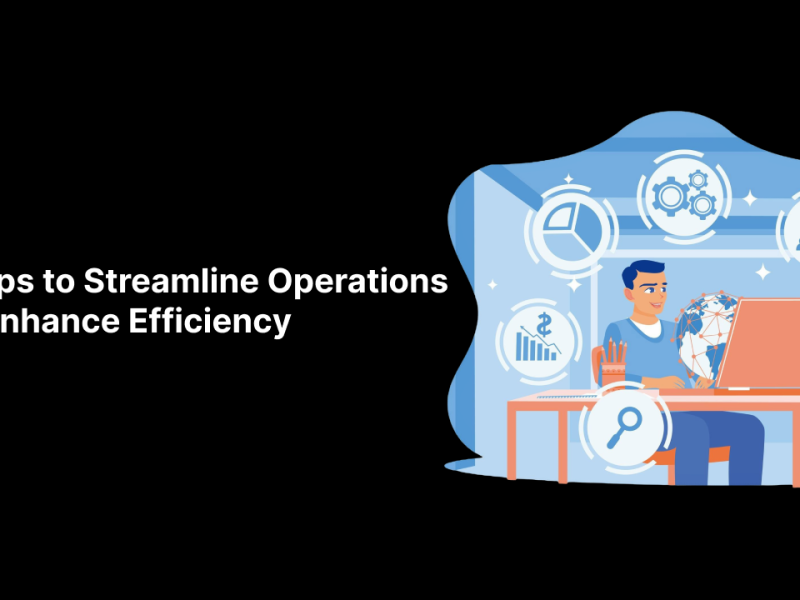Data AI is becoming increasingly important in today’s business world. However, many companies struggle to implement a data A.I. strategy effectively. Don’t worry; we will break down the key steps you need to take to successfully implement a data AI strategy in your organization.
Implementing a data AI strategy can improve decision-making processes and enhance customer experiences. However, companies risk wasting time and resources on ineffective strategies without the right plan. But with these four essential steps, you can ensure that your organization is on the right track to harnessing the power of data AI for success.
1. Define Your Objectives
The first stage in implementing an AI strategy is defining precise goals. For your efforts to be meaningful and produce real value, you must match your AI projects with your broader business objectives. Start by determining which particular issues or prospects AI can solve for your company.
Are you trying to improve customer service, simplify processes, cut expenses, or develop new goods and services? Every goal will guide your AI approach and the standards by which its performance will be evaluated.
Gather different viewpoints and ensure the goals are shared throughout the company by involving important stakeholders from other departments. The data AI strategy is inclusive and comprehensive because of the cooperative approach, which facilitates comprehending the many demands and expectations.
Besides, these goals must be ranked according to their viability and influence. Not every goal can be met at once. So, you must concentrate on high-impact areas with fast wins that can help your AI projects gain traction and support.
Give each goal precise, quantifiable results, including targets for customer satisfaction or specific performance enhancements. Together with directing the implementation process, these standards will make evaluating the AI strategy’s success easier.
2. Analyze Your Data
Your AI approach won’t work unless you assess the amount and quality of your data. Conduct a thorough data audit to find out what data you now have, where it came from, and how it’s kept and processed. Verify if your data is accurate, relevant, and complete to the criteria needed for AI applications.
Point up any holes in your data infrastructure. Find out whether any inconsistent or missing data points could impair AI performance. Taking care of data silos—data kept apart in several departments or systems—and combining these sources to produce a single data environment could be part of this.
Also, consider the amount of information that is accessible. Large datasets are not impossible for AI, but sufficient data is necessary for vital model training.
Further, robust data governance procedures are essential. To preserve data integrity and abide by laws like the GDPR or CCPA, data collection, storage, and use policies and procedures must be set up. Track and change these procedures often to keep up with alternative data sources and evolving company requirements.
Finally, consider ways to improve your data using outside sources or advanced data collection techniques. This might provide more thorough information and raise the general efficacy of your AI plan. If you carefully evaluate and polish your data, you provide a solid basis for a successful AI application.
3. Selecting the Proper AI Technologies
Maximizing the use of your data and matching it with your business goals depends on your choice of AI technologies. Find out first which particular AI skills will suit your needs the best. Aiming to enhance consumer interactions, such as natural language processing (NLP) and chatbots, can be crucial.
Machine learning models might be vital to improving predictive analytics. Sometimes, computer vision technologies are required for image or video analysis.
Give the technology’s scalability some thought. With time, AI systems need to expand with your company and manage bigger volumes of data and more hard jobs. Another important consideration is integration ease; the selected technologies should work well with your current data systems and IT architecture to guarantee a seamless installation and operation.
Further, assess how accessible and user-friendly these technologies are. Tools with clear interfaces and thorough documentation can lower learning curves and fasten team adoption. Reduced interruptions also depend on compatibility with your existing workflows and tech stack.
4. Craft an Implementation Plan
A thorough implementation plan is essential for your company to use AI successfully. To start, find particular use situations where AI can be most beneficial. Assemble departmental stakeholders to guarantee alignment and gather information on applications.
After defining the use cases, provide an implementation strategy in stages. To verify the viability and efficacy of your AI solutions at a lower scale, begin with pilot projects. To manage risks successfully, these pilot programs should have well-defined goals, success criteria, and a restricted scope.
Then, to monitor advancement, create a schedule including important checkpoints and due dates. Give team members jobs and duties so that everyone knows exactly who is in charge of what part of the project. Think about assembling teams across departments that combine knowledge in IT, business operations, data science, and AI.
Concurrently, attend to the infrastructural requirements for AI implementation. This includes guaranteeing you have the required data storage, processing power, and system integration skills. Also, analyze whether you should enhance your technology or make new investments.
Lastly, set up a feedback loop to continuously track, assess, and improve your AI solutions. Get performance statistics and user input, and be ready to improve iteratively. This incremental method will enable you to adjust to evolving needs and guarantee the long-term success of your AI projects.
Conclusion
To fully use AI, you must set specific goals, evaluate your data, select the appropriate AI technology, and create a thorough implementation plan. In today’s data-driven world, this strategic approach will improve your operations, spur creativity, and give you a competitive advantage.



Naveen Khanna is the CEO of eBizneeds, a company renowned for its bespoke web and mobile app development. By delivering high-end modern solutions all over the globe, Naveen takes pleasure in sharing his rich experiences and views on emerging technological trends. He has worked in many domains, from education, entertainment, banking, manufacturing, healthcare, and real estate, sharing rich experience in delivering innovative solutions.


